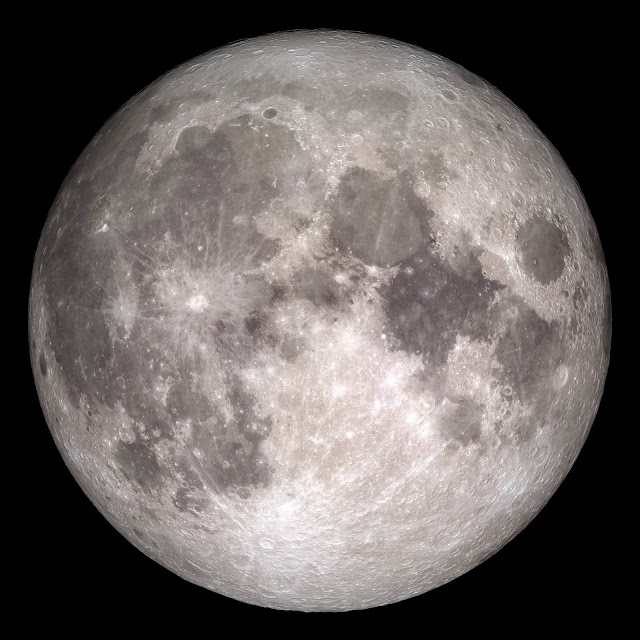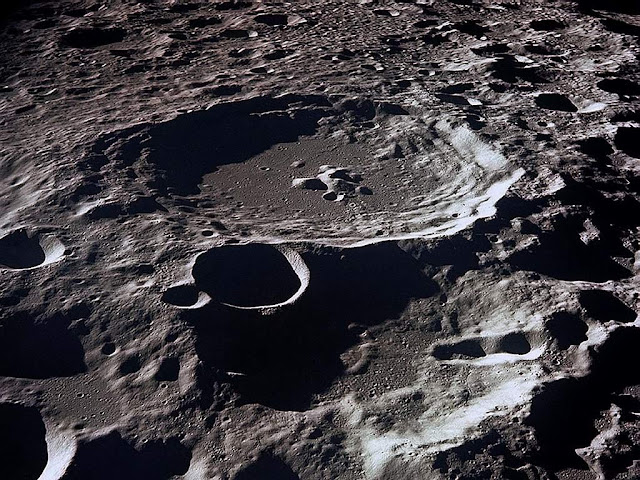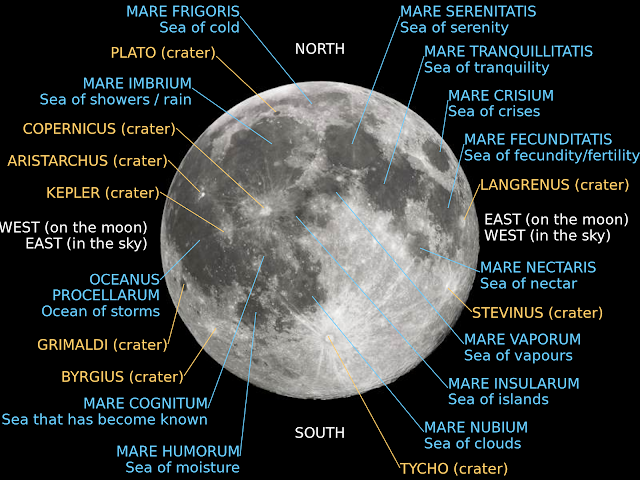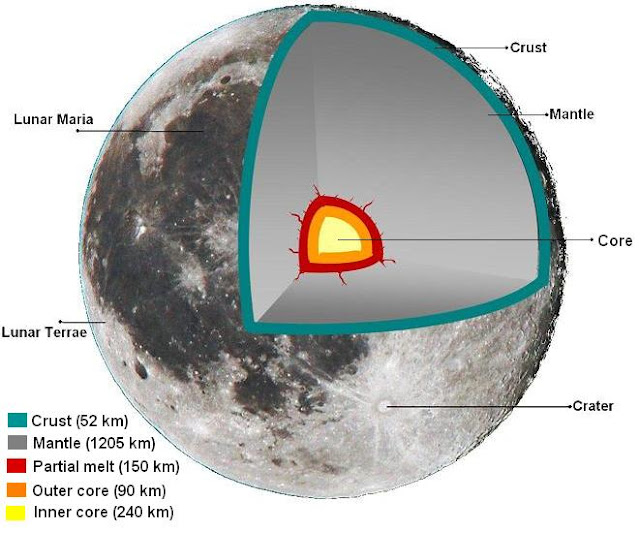THE MOON IS
THE EARTH'S only natural satellite. It is relatively large for a moon, with a diameter of about 3,470 kilometres- just over a quarter that of
the Earth. The Moon takes the same
 |
| The Moon |
time to rotate on its axis as it takes to orbit
the Earth 27.3 days and so the same side (the near side) always faces us. However,
the amount of the surface we can see- the phase of the Moon - depends on how much of the near side is in sunlight. The Moon is dry and barren, with negligible atmosphere and water. It consists mainly of solid rock, although its core may contain molten rock or iron. The surface is dusty, with highlands covered in craters caused by meteorite impacts, and lowlands in which large craters have been filled by solidified lava to form dark areas called
Maria or
Seas.
 |
| Phases of the Moon |
 |
| Craters of the Moon |
 |
| Moon's Craters Name |
Maria occur mainly on the near side, which has a thinner crust than the far side. Many of the craters are rimmed by mountain ranges that form the crater walls and can be thousands of metres high.
 |
| Internal Structure of the Moon |





No comments:
Post a Comment
Let me know guys what you think about this.